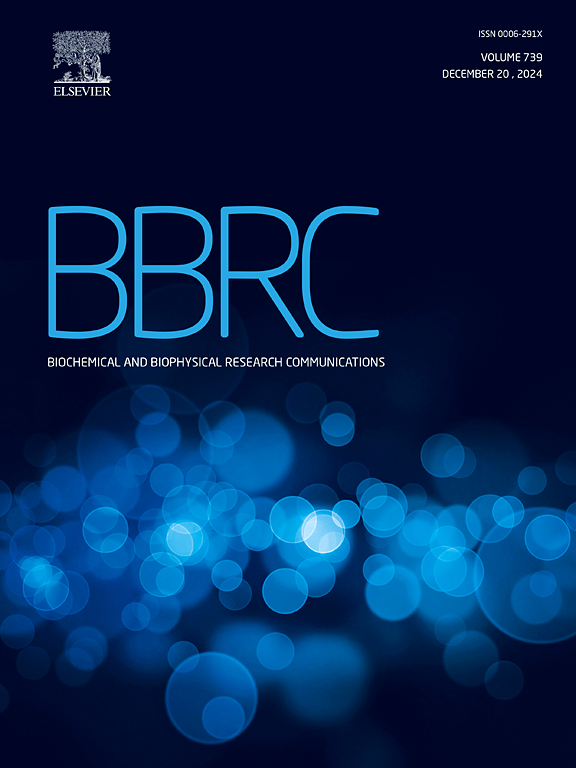Structural insights into the role of NahX from Pseudomonas sp. MC1 in the naphthalene degradation pathway
IF 2.2
3区 生物学
Q3 BIOCHEMISTRY & MOLECULAR BIOLOGY
Biochemical and biophysical research communications
Pub Date : 2025-01-01
DOI:10.1016/j.bbrc.2024.151120
引用次数: 0
Abstract
Polycyclic aromatic hydrocarbons (PAHs) are among the most widespread organic pollutants known for their carcinogenic and mutagenic properties. There is a growing interest in understanding the degradation and detoxification processes of these substances using biological approaches. The bacterium Pseudomonas sp. MC1 contains a metabolic plasmid (81 kb) that encodes enzymes involved in the conversion of naphthalene (the simplest and most soluble PAH) to salicylate. Therein, nahX is a part of the lower naphthalene degradation operon and encodes a 140-amino acid protein. However, the function of NahX remains unclear. To understand its function more clearly, we first determined the three-dimensional structure of NahX. It has a fold similar to that of HbpS, which acts as a sensory component in response to oxidative stress. Biochemical studies have also shown that NahX and HbpS exhibit heme degradation activity and bind to iron ions. Heme degradation and iron-sequestering activity protect bacteria against oxidative stress. Previous studies have shown that oxidative stress occurs during naphthalene degradation. Therefore, we postulate that NahX has a defense mechanism against the oxidative stress that may occur during naphthalene metabolism.
来自假单胞菌sp. MC1的NahX在萘降解途径中的作用的结构见解。
多环芳烃(PAHs)是最广泛的有机污染物之一,已知其致癌和致突变特性。人们对利用生物学方法了解这些物质的降解和解毒过程越来越感兴趣。假单胞菌sp. MC1含有一个代谢质粒(81 kb),该质粒编码参与萘(最简单和最易溶的多环芳烃)转化为水杨酸的酶。其中,nahX是下萘降解操纵子的一部分,编码140个氨基酸的蛋白质。然而,NahX的功能尚不清楚。为了更清楚地了解它的功能,我们首先确定了NahX的三维结构。它的折叠与HbpS相似,后者在氧化应激反应中起着感觉成分的作用。生化研究也表明,NahX和HbpS具有血红素降解活性,并与铁离子结合。血红素降解和铁隔离活性保护细菌免受氧化应激。先前的研究表明,氧化应激发生在萘的降解过程中。因此,我们假设NahX对萘代谢过程中可能发生的氧化应激具有防御机制。
本文章由计算机程序翻译,如有差异,请以英文原文为准。
求助全文
约1分钟内获得全文
求助全文
来源期刊
CiteScore
6.10
自引率
0.00%
发文量
1400
审稿时长
14 days
期刊介绍:
Biochemical and Biophysical Research Communications is the premier international journal devoted to the very rapid dissemination of timely and significant experimental results in diverse fields of biological research. The development of the "Breakthroughs and Views" section brings the minireview format to the journal, and issues often contain collections of special interest manuscripts. BBRC is published weekly (52 issues/year).Research Areas now include: Biochemistry; biophysics; cell biology; developmental biology; immunology
; molecular biology; neurobiology; plant biology and proteomics

 求助内容:
求助内容: 应助结果提醒方式:
应助结果提醒方式:


